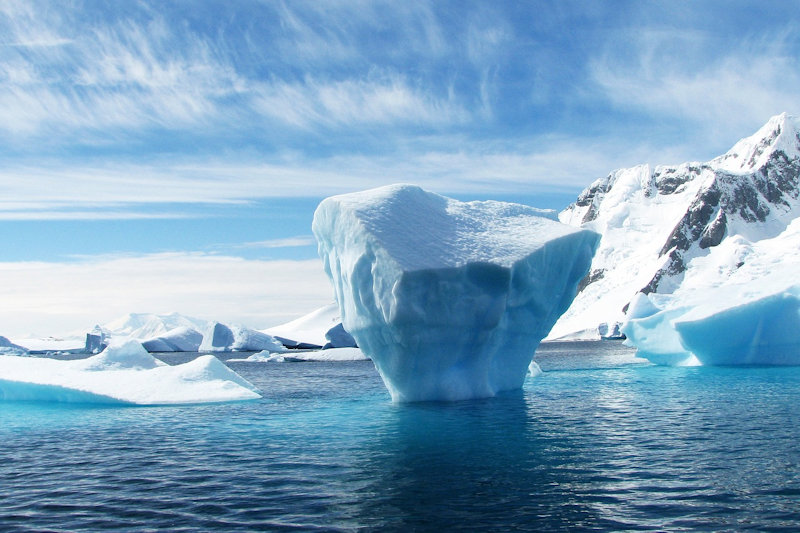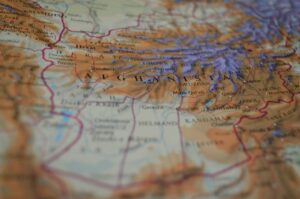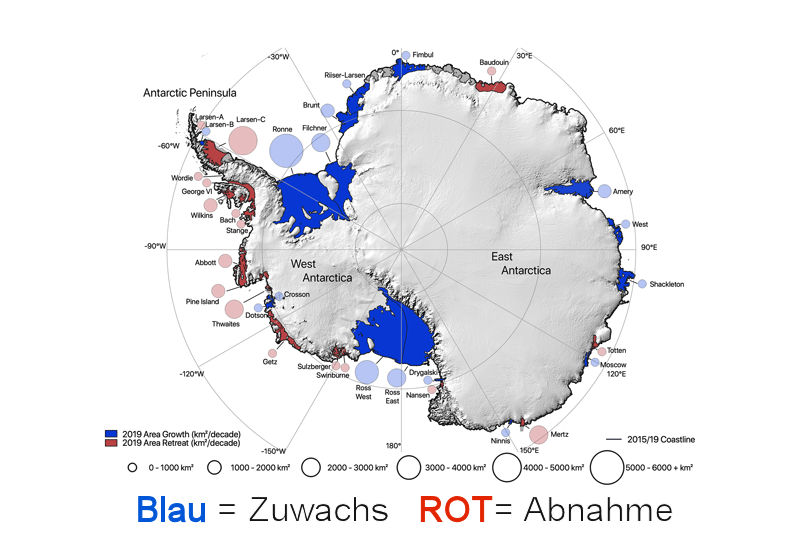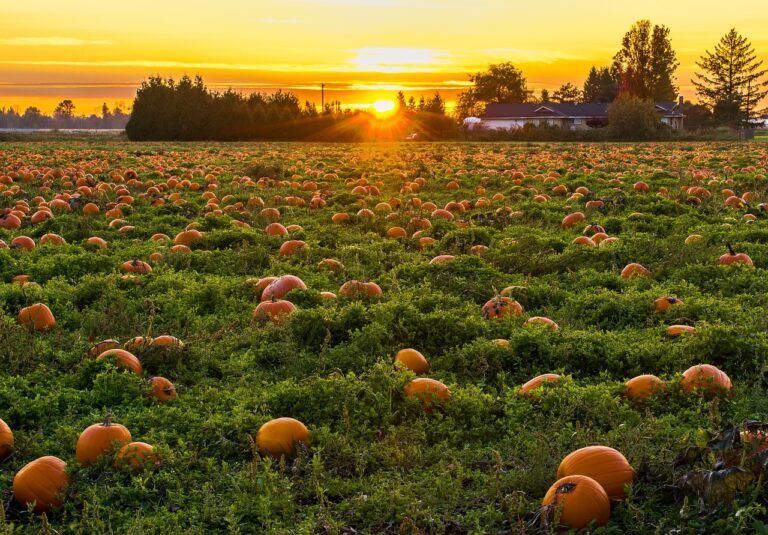 Die antarktischen Schelfeise stützen das Inlandeis, stabilisieren den Fluss des auf dem Boden liegenden Eises und tragen so zum globalen Meeresspiegel bei.
Die antarktischen Schelfeise stützen das Inlandeis, stabilisieren den Fluss des auf dem Boden liegenden Eises und tragen so zum globalen Meeresspiegel bei.
In den letzten 50 Jahren haben Satellitenbeobachtungen gezeigt, dass Schelfeis kollabiert, dünner wird und sich zurückzieht; es gibt jedoch nur wenige Messungen der antarktisweiten Veränderungen der Schelfeisfläche.
Hier verwenden wir MODIS-Satellitendaten (Moderate Resolution Imaging Spectroradiometer), um die Veränderung der Position und Fläche der Schelfeiskalbung an 34 Schelfeisflächen in der Antarktis von 2009 bis 2019 zu messen.
In den letzten zehn Jahren wurde eine
- Verringerung der Fläche auf der Antarktischen Halbinsel (6693 km2)
- und der Westantarktis (5563 km2)
- durch einen Flächenzuwachs in der Ostantarktis (3532 km2)
- und auf den großen Ross- und Ronne-Filchner-Schelfeisen (14 028 km2) aufgewogen.
Der größte Rückgang wurde auf dem Larsen-C-Schelfeis beobachtet, wo 5917 km2 Eis während eines einzelnen Kalbungsereignisses im Jahr 2017 verloren gingen, und der größte Flächenzuwachs wurde auf dem Ronne-Schelfeis in der Ostantarktis beobachtet, wo ein allmählicher Vorstoß in den letzten zehn Jahren (535 km2 pro Jahr) zu einem Flächenzuwachs von 5889 km2 zwischen 2009 und 2019 führte.
Insgesamt ist die Fläche des antarktischen Schelfeises seit 2009 um 5305 km2 gewachsen, wobei sich 18 Schelfe zurückzogen und 16 größere Schelfe an Fläche zunahmen.
Unsere Beobachtungen zeigen, dass die antarktischen Schelfe in den letzten zehn Jahren 661 Gt Eismasse hinzugewonnen haben, während der stationäre Ansatz für denselben Zeitraum einen erheblichen Eisverlust erwarten lässt, was zeigt, wie wichtig es ist, zeitlich variable Beobachtungen des Kalbungsflusses zu verwenden, um Veränderungen zu messen.
Quelle: https://tc.copernicus.org/
[/av_textblock]
[/av_one_full][av_hr class=’default’ icon_select=’yes’ icon=’ue808′ position=’center’ shadow=’no-shadow’ height=’50’ custom_border=’av-border-thin’ custom_width=’50px’ custom_margin_top=’30px’ custom_margin_bottom=’30px’ custom_border_color=” custom_icon_color=” av-desktop-hide=” av-medium-hide=” av-small-hide=” av-mini-hide=” id=” custom_class=” template_class=” av_uid=” sc_version=’1.0′]
[av_postslider link=’category,251,1,914,1236,1123,10,1196,1131,1232,22,692,809,32,695,56,7,8,711,9,1197,4766,1210,1175,11,227,1032,76,1051,1242,33′ wc_prod_visible=” wc_prod_hidden=’hide’ wc_prod_featured=” prod_order_by=” prod_order=” date_filter=” date_filter_start=” date_filter_end=” date_filter_format=’yy/mm/dd’ period_filter_unit_1=’1′ period_filter_unit_2=’year’ items=’50’ offset=’0′ page_element_filter=” contents=’title’ columns=’3′ preview_mode=’auto’ image_size=’portfolio’ control_layout=’av-control-default’ slider_navigation=’av-navigate-arrows’ nav_visibility_desktop=” autoplay=’yes’ interval=’5′ img_scrset=” lazy_loading=’disabled’ alb_description=” id=” custom_class=” template_class=” av_uid=” sc_version=’1.0′]



























+ There are no comments
Add yours